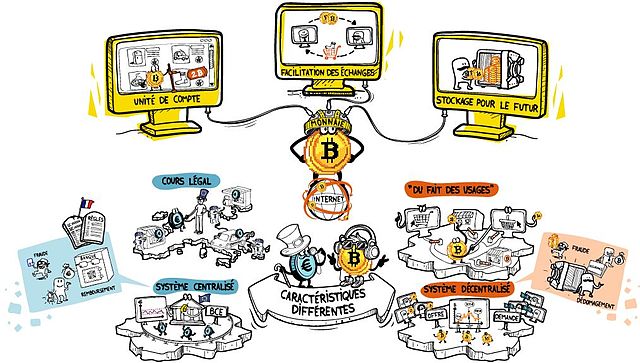The near vertical rise and fall in price of the cryptocurrency Bitcoin in recent months has been accompanied by reporting about the energy used to run the Bitcoin network. The amount is enormous, more than enough to supply the entire country of Ireland.
Many other cryptocurrencies operate under less energy-intensive designs. But the more than 1,000 other digital coins beyond Bitcoin certainly use a considerable amount of energy though there is no overall estimate I’m aware of. (For the technically minded, here is a discussion of two popular methods associated with validating transactions, one of which is considerably less energy-intensive.)
We’d like to think that the information economy of which these newfangled currencies are part bears lightly on the broader environment. But as I pointed out in my piece “The Unbearable Lightness of Information,” much of what happens in the information economy is simply focused on extracting more resources more quickly to create more goods and services for more customers. The physical economy isn’t disappearing. It is merely being exploited more completely using digital information.
And beyond this, “Every person who works in the so-called information sector of the economy must be housed, clothed, schooled, provided transportation, provisioned with household goods, given opportunities for entertainment and recreation, [and] supplied with a wide array of public services.”
Having said all this, I find one aspect of the blockchain technology behind the explosion in digital currencies to be promising. This technology offers a possible path for decentralizing banking and finance and myriad other Internet-related services we’ve come to rely on from big corporations. By creating a highly efficient transparent network with accounts readable by anyone and validation done by anyone who is willing to set up the necessary equipment, these networks make possible much wider use of micropayments to small service providers. That could make centralized Internet-based services obsolete over time in many areas and bring power back to system users.
Conceivably, you could take back control of your personal information instead of trusting someone else to handle it securely (a need reinforced by regular major data breaches such as the Equifax debacle). In the area of data backup and storage, you could choose to deal with many small distributed providers of data storage instead of dealing with one large company. Think Napster (with a small fee) for storage as opposed to large cloud services companies such as Amazon.
Right now the accessibility and security issues related to participating in these incipient networks are formidable for average people. But those pushing blockchain technology are hard at work on these issues.
Perhaps of most interest to me is the application of blockchain to energy markets. Already Rocky Mountain Institute is leading efforts to develop blockchain technology for these markets. Three candidates for the technology are customer billing, renewable energy certificates, and peer-to-peer energy sharing networks.
Saying one understands all the implications of blockchain technology today would be similar to saying one understands all the implications of the Internet in the early 1990s.
Apart from the headline-grabbing fortunes made by early entrants into the blockchain world, there seem to be much more profound implications to this technology. While Bitcoin is getting most of the attention, it is very much a single-purpose vehicle for those who want to store wealth in a currency not controlled by central banks. I’ll leave predictions about Bitcoin’s future to others.
But the future of blockchain in general seems worthy of attention. The biggest threat it poses to the established order is the possibility of decentralizing wealth and power. Whether it will accomplish that to any degree is unknowable. But it is worth thinking about if you can avert your eyes from the current frenzy in the cryptocurrency marketplace.
Graphic: “Bitcoin – is it the currency of the future?” (“Le Bitcoin est-il la monnaie du futur ?”). By Ayouben (2015). Via Wikimedia Commons.






